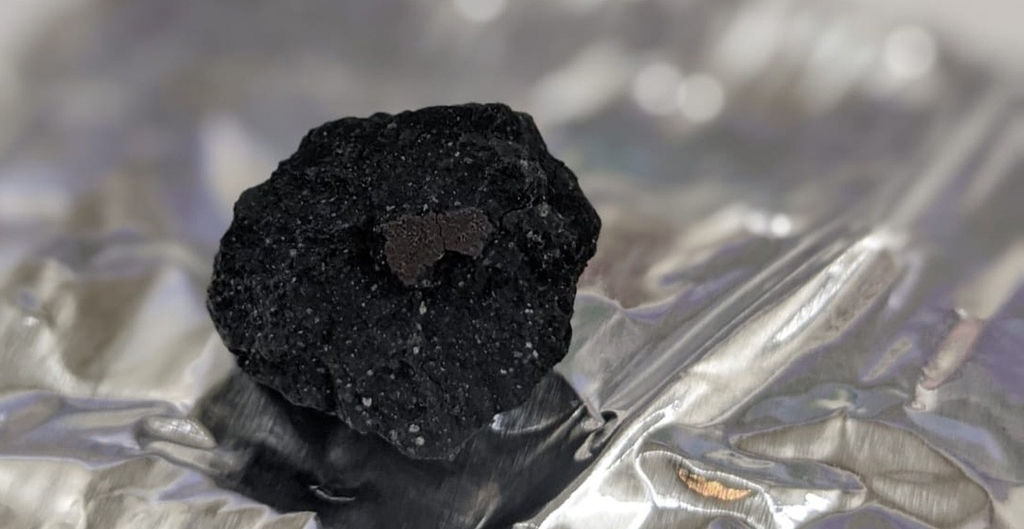300g meteorite found in a small town in England
Contains ingredients such as carbon, organic matter and amino acids
Expert “A meteorite special enough to be stunned at first sight”

It is said to consist of’carbonaceous chondrites’ that retained their chemical properties about 4.6 billion years ago, the generation of the solar system. [영국 자연사박물관 제공. 재판매 및 DB 금지]
(Seoul = Yonhap News) Reporter Lee Young-seop = Pieces of meteorites that fell in a small town in England are exciting astronomers.
This is because meteorites are made of rare substances that retain their chemical properties about 4.6 billion years ago, the generation of the solar system. Perhaps it contains clues about the origin of life, scholars expect.
On the 8th (local time), according to the BBC and CNN of the United States, on the evening of the 28th of last month on Sunday, a meteor burning across the sky was observed in the southern part of the UK.
This’shooting star’ was also captured by a special camera installed by the British Museum of Natural History, and the information contained in the camera was used to determine the fall point.
Some pieces of the meteorite fell on the driveway in front of the home of a small town resident named Winchcomb in Gloucestershire, England.
Scholars confirmed this as an actual meteorite fragment, after which a search team was dispatched to find other fragments. There were also reports of discovery from nearby residents.
Up to now, a total of 300-400 g of meteorite fragments have been secured and are being kept at the Natural History Museum.
Meteorites attract attention because they are made of carbonaceous chondrite.
This is because it is the most primordial and unpolluted in the solar system, giving you an understanding of the early history of the solar system and the origin of life on Earth.

[영국 자연사박물관 제공. 재판매 및 DB 금지]
Dr. Ashley King of the Natural History Museum explained, “Carbon chondrites are special in that they are, in simple terms, a building material left over from the construction of the solar system.”
“Most of them contain simple organic matter and amino acids, and some contain minerals produced by water,” he said. “In other words, there are all the ingredients to understand the process by which life-saving planets like Earth are made.”
Richard Greenwood, a researcher at Open University, who was the first scholar to identify a piece of a meteorite that fell on a Witchcom driveway, recalled, “When I saw the sculpture that the landlord put in a plastic bag, my legs were relieved. It was a very special meteorite.”
According to the Natural History Museum, there are currently about 65,000 meteorites that have been confirmed to have fallen to Earth. Of these, only 1,206 were actually observed to fall, and 51 were more rare with carbonaceous chondrites.
The museum explained that the pieces collected this time are similar to samples taken from the recent Japanese asteroid probe Hayabusa 2 from the asteroid Ryugu, about 340 million km away from Earth.
Unauthorized reproduction-redistribution prohibited>
2021/03/09 16:05 sent
